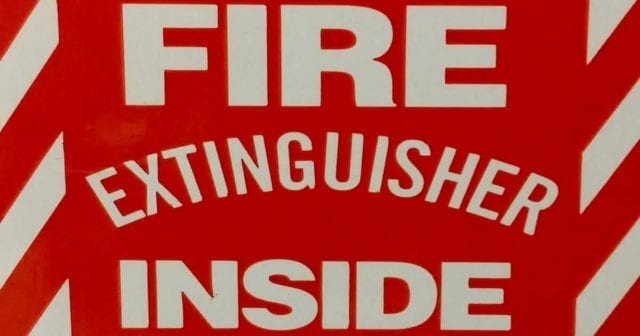Every home and business should have at least one fire extinguisher. But having one and knowing what to do with it are two different things. Make sure you’ve got the right kind of fire extinguisher for your home or business and that you know how to use it if a fire occurs.
DIFFERENT TYPES OF FIRE EXTINGUISHERS
Not all fire extinguishers are the same. There are five different types available to choose from. Most homes and businesses use what’s known as a multipurpose extinguisher fire which are good for three different classes of fire: A, B, and C.
When you purchase a fire extinguisher, make sure that you look for the class symbols on the label so you know what types of fires you’re prepared for.
- A: Use this for fires involving ordinary combustibles like paper, wood, trash, plastics, and rubber.
- B: This extinguisher is good for fires involving flammable liquids like oil, grease, gasoline, or paint.
- C: Use this for a fire involving electrical equipment such as wiring, fuse boxes, circuit breakers, and appliances.
- D: This class may be less commonly known for most people as it’s used for combustible metals like magnesium, titanium, lithium, and potassium.
- K: You’ll find this type of fire extinguisher in restaurants because it’s specifically for combustible cooking fires involving large amounts of hot grease.
HOW TO USE YOUR FIRE EXTINGUISHER
Hopefully you’ll never need to use your fire extinguisher, but accidents happen. The worst time to learn is when there’s a fire in front of you. Make sure you know what to do beforeyou need it.
- Call for help. That way help is on the way in case things get out of control.
- Find your evacuation path and do your best to keep the fire from reaching that area. Keep your back to your way out so you can run if needed.
- Stand at least eight feet from the fire if possible.
- Once you use your fire extinguisher, if it doesn’t work, get out of there.
To use your fire extinguisher, follow the PASS method:
- Pull the pin to unlock the lever or button
- Aim the nozzle low at the base of the fire
- Squeeze the lever to discharge the extinguisher
- Sweep back and forth, covering the fire, until it goes out.
Once you discharge your fire extinguisher, it must be recharged or replaced. You can’t use it again.
Another important step in preparing for a possible fire is to make sure you have enough homeowners insurance to help repair or replace your home. If it’s been a while since you thought about your policy limits, now is a good time to make sure that your policy adequately covers your home. If you’re unsure, contact us at Charlotte Insurance and let us review your current policy, today.

